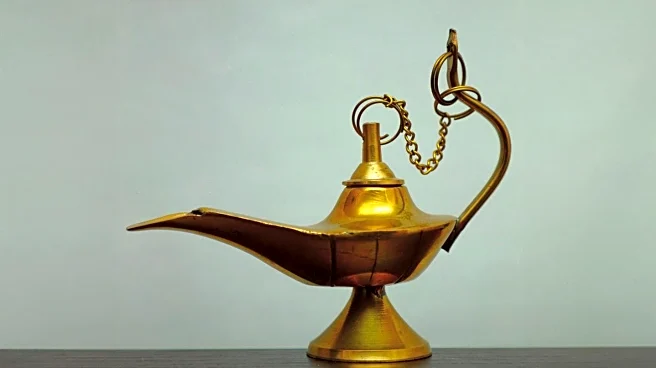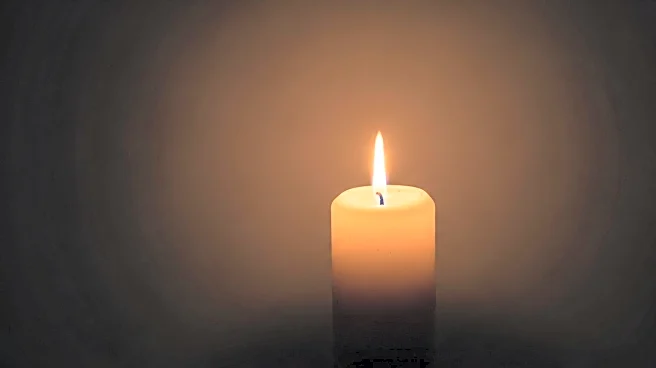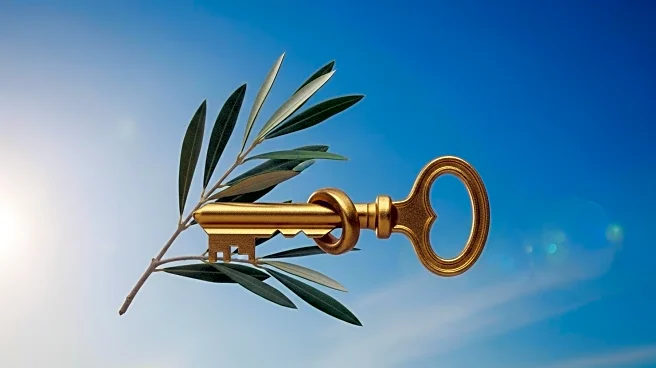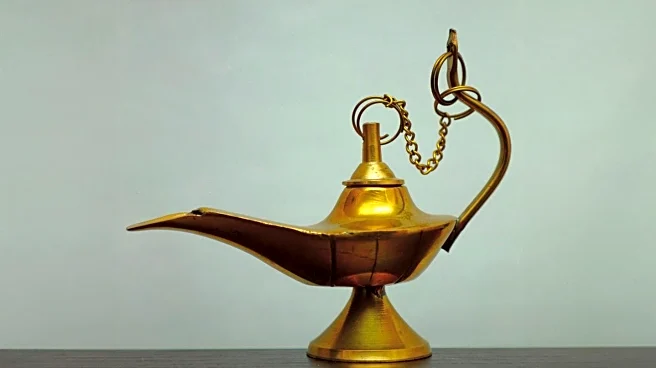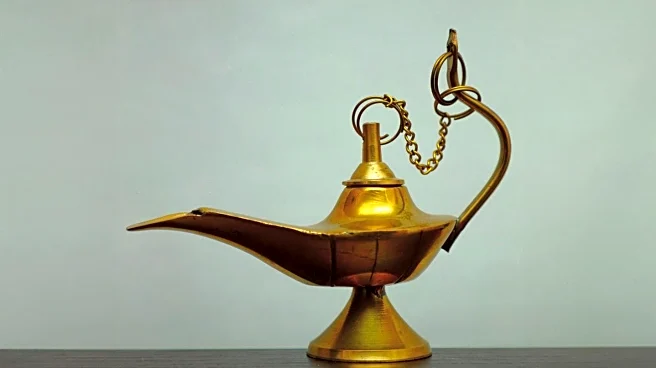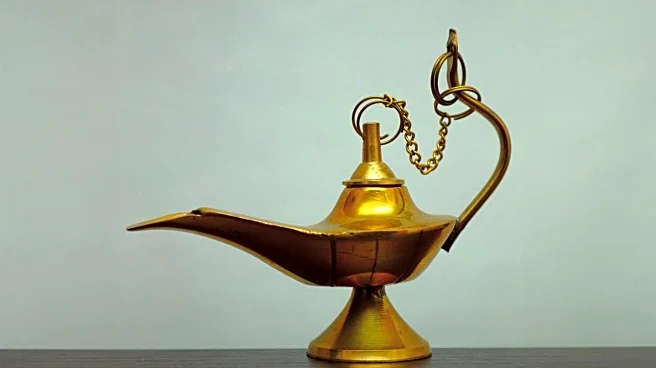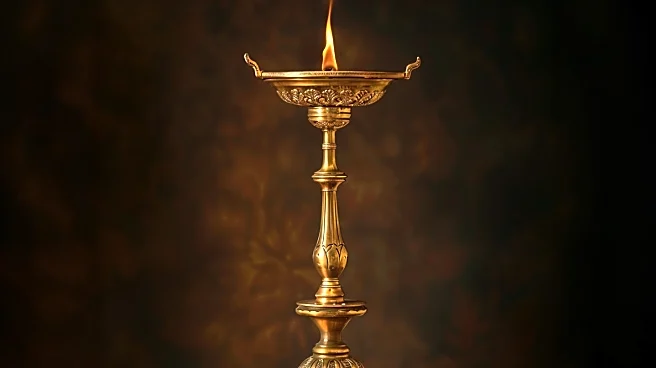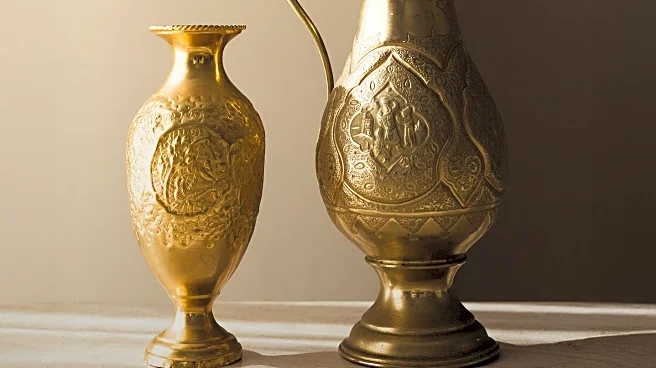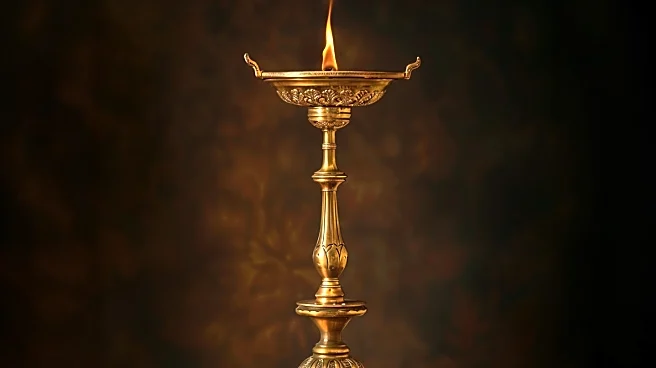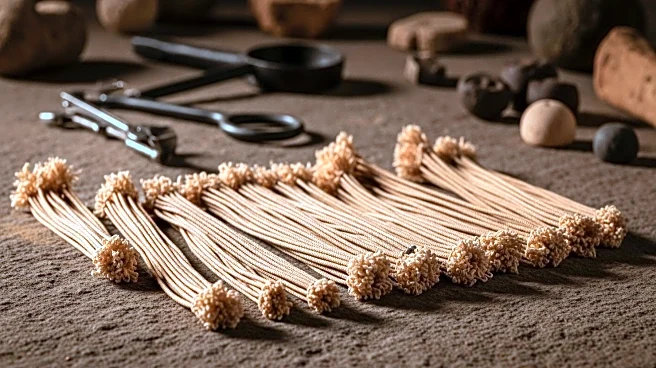What is the story about?
What's Happening?
A significant archaeological discovery in Yehud, Israel, has revealed some of the oldest known lamp wicks, dating back 4,000 years to the Intermediate Bronze Age. These wicks, made from recycled linen fabric, were found inside clay lamps during an excavation by the Israel Antiquities Authority (IAA). The discovery is remarkable due to the preservation of organic materials in the moist Mediterranean climate, which typically leads to decomposition. The wicks underwent a rare fossilization process, allowing them to survive over millennia. Researchers Dr. Naama Sukenik and Dr. Yonah Maor highlighted the unexpected nature of the find, given the wicks' intended use for combustion. The lamps, found in ancient tombs alongside other burial offerings, were likely used in burial ceremonies, reflecting common practices in the ancient Near East.
Why It's Important?
This discovery sheds light on early recycling practices, demonstrating that ancient populations maximized the use of precious raw materials. The use of recycled linen for lamp wicks indicates smart economic conduct and resourcefulness in ancient societies. The find contributes to the understanding of cultural and ritual practices in the Intermediate Bronze Age, particularly the symbolic use of fire in burial ceremonies. The preservation of these wicks offers valuable insights into the technological and economic aspects of ancient life, enhancing the historical narrative of the region. The research underscores the importance of archaeological studies in uncovering the complexities of past civilizations.
What's Next?
The findings have been published in the IAA's scholarly journal, 'Atiqot, Volume 118, and will likely prompt further archaeological investigations in the region to explore more about the Intermediate Bronze Age. The discovery may lead to new insights into ancient recycling practices and the socio-economic dynamics of the time. Researchers and historians may focus on understanding the broader implications of such practices on ancient economies and their relevance to modern sustainability efforts. The IAA plans to continue publishing findings to enrich the historical understanding of Israel's past.
Beyond the Headlines
The discovery of ancient lamp wicks opens discussions on the ethical and cultural dimensions of recycling and resource management in historical contexts. It highlights the long-standing human ingenuity in adapting to environmental challenges and optimizing available resources. This find may influence contemporary perspectives on sustainability, encouraging a reevaluation of historical practices in light of modern environmental concerns. The preservation of these artifacts also raises questions about the methods and conditions that allow organic materials to survive over extended periods, offering potential advancements in archaeological preservation techniques.
AI Generated Content
Do you find this article useful?
